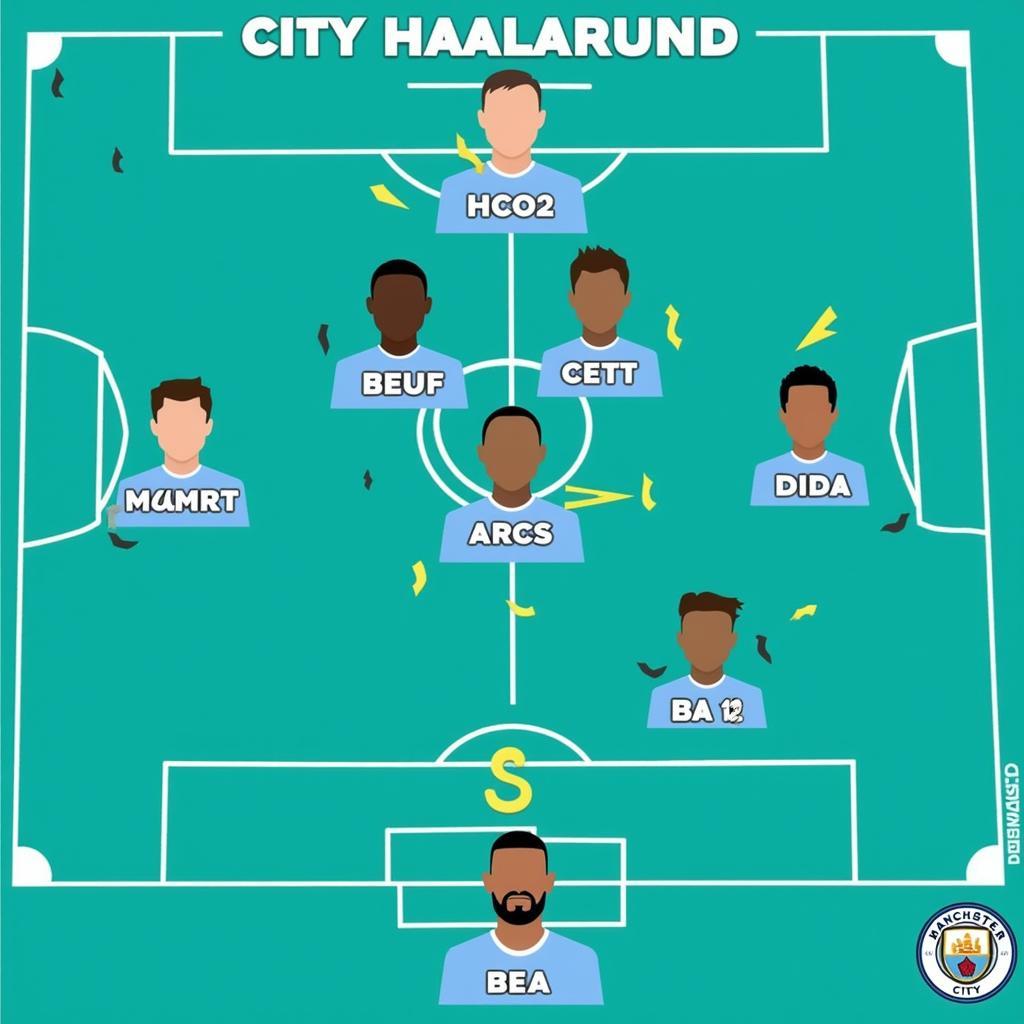Man City Formation with Haaland: Tactical Analysis and Impact
October 13, 2024Since his arrival at Manchester City, Erling Haaland has taken the Premier League by storm, breaking goal-scoring records and redefining the role of a striker. His unique skillset has seamlessly integrated into Pep Guardiola’s tactical masterplan, taking Man City’s formation and overall gameplay to unprecedented heights.
 Man City formation with Haaland on the pitch
Man City formation with Haaland on the pitch
Haaland’s Impact on Man City’s Formation
Before Haaland, Manchester City were known for their fluid, possession-based football, often operating without a recognized striker. However, Haaland’s presence has brought a new dimension to their attack, demanding a more structured approach while retaining their signature fluidity.
 Erling Haaland celebrating a goal for Man City
Erling Haaland celebrating a goal for Man City
4-3-3 with a Focal Point
Pep Guardiola has predominantly favored a 4-3-3 formation with Haaland spearheading the attack. This formation provides the perfect balance between defensive solidity and attacking potency.
-
Haaland as the Target Man: Haaland’s physical presence, aerial prowess, and clinical finishing make him the ideal target man. His ability to hold up the ball, bring others into play, and occupy multiple defenders creates space for City’s creative midfielders to exploit.
-
Midfield Maestros: Kevin De Bruyne, Bernardo Silva, and Rodri form a formidable midfield trio, capable of dictating the tempo and unlocking defenses with their passing range, vision, and technical ability. Their movement and interplay create passing lanes for Haaland to exploit.
-
Width and Pace on the Flanks: The likes of Jack Grealish, Phil Foden, and Riyad Mahrez provide width and pace on the wings, stretching opposing defenses and creating space for Haaland to operate centrally. Their ability to deliver pinpoint crosses adds another layer to City’s attacking threat.
Tactical Flexibility and Adaptations
While the 4-3-3 has been the preferred formation, Guardiola’s tactical acumen is evident in his willingness to adapt based on the opposition and game situation.
3-4-3 for Defensive Solidity
Against teams that employ a high press, Guardiola has opted for a 3-4-3 formation, providing additional defensive cover while maintaining offensive potency. This system allows City to build from the back with greater security and utilize the wing-backs for attacking width.
False Nine Variations
In certain scenarios, Guardiola has reverted to a false nine system, with a midfielder like Ilkay Gundogan or Bernardo Silva operating as a nominal striker. This tactic aims to exploit space between the lines and create overloads in midfield, keeping the opposition guessing.
Conclusion: A Match Made in Tactical Heaven
The integration of Erling Haaland into Manchester City’s system has been seamless and devastatingly effective. His unique skillset has added a new dimension to their attack, making them an even more formidable force in world football. Guardiola’s tactical flexibility and willingness to adapt his system to incorporate Haaland’s strengths have been crucial to their success. As Haaland continues to evolve and develop his understanding with his teammates, the future looks incredibly bright for Manchester City.